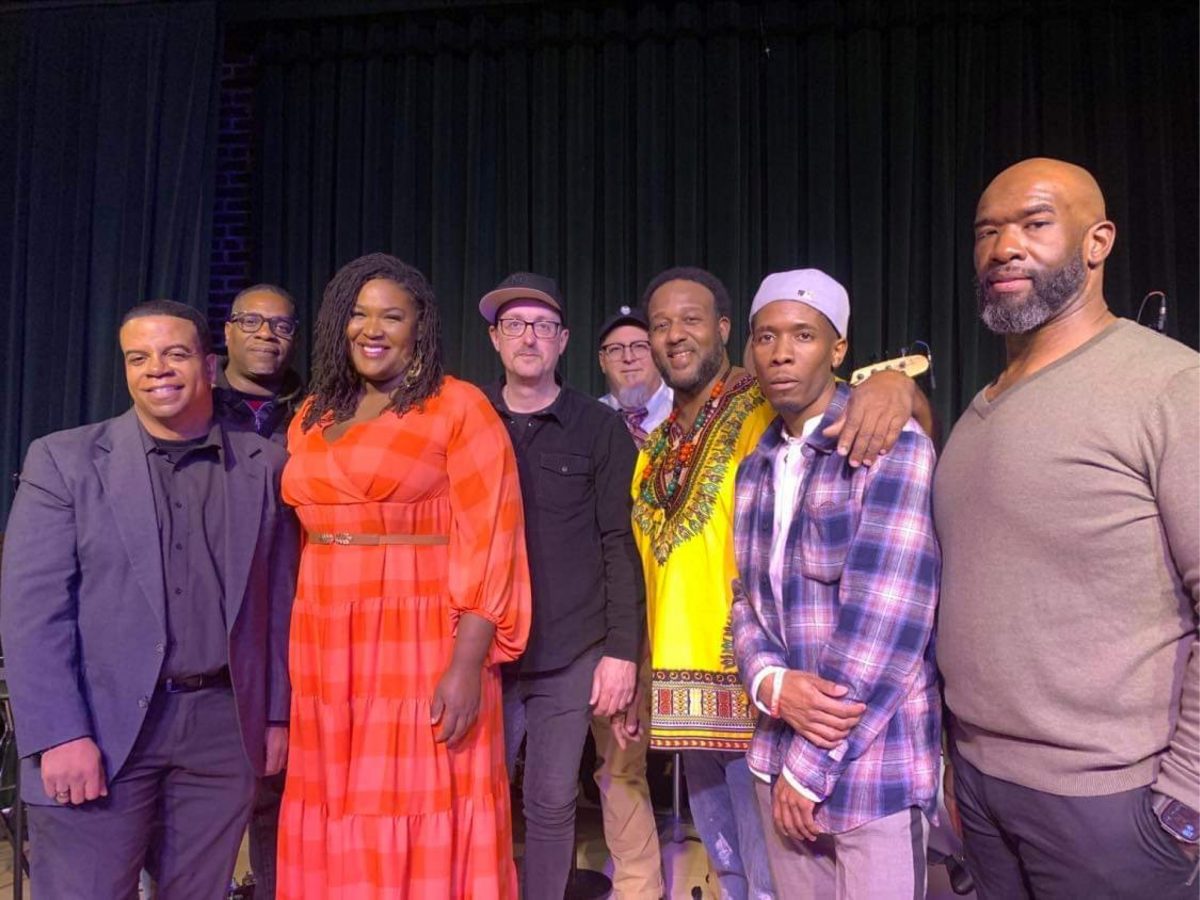When Crosstown Arts musical director Jenny Davis introduced The Green Room’s featured artist last Friday, she noted something unique about him: “For those of you who don’t know, James Sexton is the unofficial M.V.P. of jazz month, he’s drummed with so many of the bands performing this March.” And while it’s true that Sexton is one of the city’s most versatile drummers, often playing with the Ted Ludwig trio and their disparate collaborators, last Friday wasn’t about his track record. Rather, it was about tracks, his tracks, never yet heard on a record but surely deserving it.
To a sold out room, Sexton and band took to the stage as he gave a shout out to his time studying with Dr. Jack Cooper and the late Tim Goodwin at the University of Memphis Scheidt School of Music, noting that while he never finished his degree there, it had profoundly affected his grasp of music and arranging. Creating his dream band, the Otis Mission, for Friday’s debut was a culmination of those and many more years of composing and arranging. “Otis is my middle name,” Sexton explains, “named after my late godfather Otis Washington.”
While one could broadly describe the compositions as jazz fusion, that would belie the stylistic versatility of the band, as they deftly navigated charts bursting with stop-time phrases and unison lines in the classic jazz fusion approach, yet ranging from funk to salsa to reggae to gospel. That band included Sexton on drums, Alvie Givhan on keyboards, Tony Dickerson on “auxiliary keys,” Joe Restivo on guitar, Carl Caspersen on bass, DeAnté Payne on mallet instruments (via a large set of pads triggering samples), and Christian Kirk and brother James “Jennings” Sexton as guest singers, and they rose to the challenge of the material’s complexity with aplomb.
And yet, to hear James Sexton tell it, that was just the beginning. “This is a condensed version of The Otis Mission,” he wrote to the Memphis Flyer. “I originally wrote the music for a 15-piece ensemble, consisting of three singers, three horns, a string quartet, keys, bass, lead guitar, percussion, and drums. So the next show will be the whole kit and caboodle.”
As a drummer, Sexton is a world-class talent, having performed or recorded with the likes of En Vogue, Amy Grant, Dee Dee Bridgewater, Branford Marsalis, Kirk Whalum, BeBe Winans, The Royal Philharmonic Orchestra of London, and Stevie Wonder. But last Friday, he was playing for one person in particular: “I just really wanted my dad to hear it,” he notes. “He’s been on me the last three years or so. We’d tried to pull off the show before Covid hit, but it didn’t work out. So, I’m very relieved to have finally gotten the ball rolling, with my pops in attendance.”
The group brought Sexton’s work to life with precision and soul, offering some stunning solos along the way, including Sexton’s own solo turn on the kit as he kept a perfect clave beat with a foot pedal hitting a wood block. Below, Sexton offers his commentary on the intricate, funky pieces he premiered last Friday:

• No Limit ‘Cept Yo Limits is “funk inspired, a Prince kinda vibe.”
• A.M. Spired, a compositional highlight, was “inspired by modal jazz of the ’50s and ’60s.”
• Duly Noted. Lesson Learned was based on a “bad experience that’ll never happen again. A mixer of rock and reggae that featured prominent Memphis guitarist Joe Restivo and myself.”
• Get up Sunshine was “inspired by classic vocal jazz ballads, and featured Christian Kirk, the daughter of legendary Memphis jazz pianist Sidney Kirk. It also featured Alvie Givhan on piano and DeAnte Payne on vibes. The message is simply ‘Don’t dim your light. The world needs it.'”
• Eden’s Aura was “inspired by my then five-year-old daughter’s mood swings, and my time playing in a salsa band. Her name is Sarah Eden Sexton. It featured DeAnte Payne, Alvie Givhan, and myself.”
• Got That Good Feelin’ (How bout’ Chu?) was “inspired by my time as a drummer in the The New Orleans Jazz Ramblers. A great tune for a second line dance.”
• The Liberator, sung by Sexton’s brother James “Jennings” Sexton, revealed the importance of the church to Sexton. “This shows my gospel roots. In the Christian faith, Jesus is the door to liberation, in every aspect of life.”
• The Hatchling, a title Sexton said referred to himself, is “an up-tempo jazz fusion tune, inspired by artists like James Brown, Tower of Power, or the Dave Weckl Band. There’s a fusion version of a James Brown tune called ‘The Chicken,’ and this would be my version of an updated spin off.”

